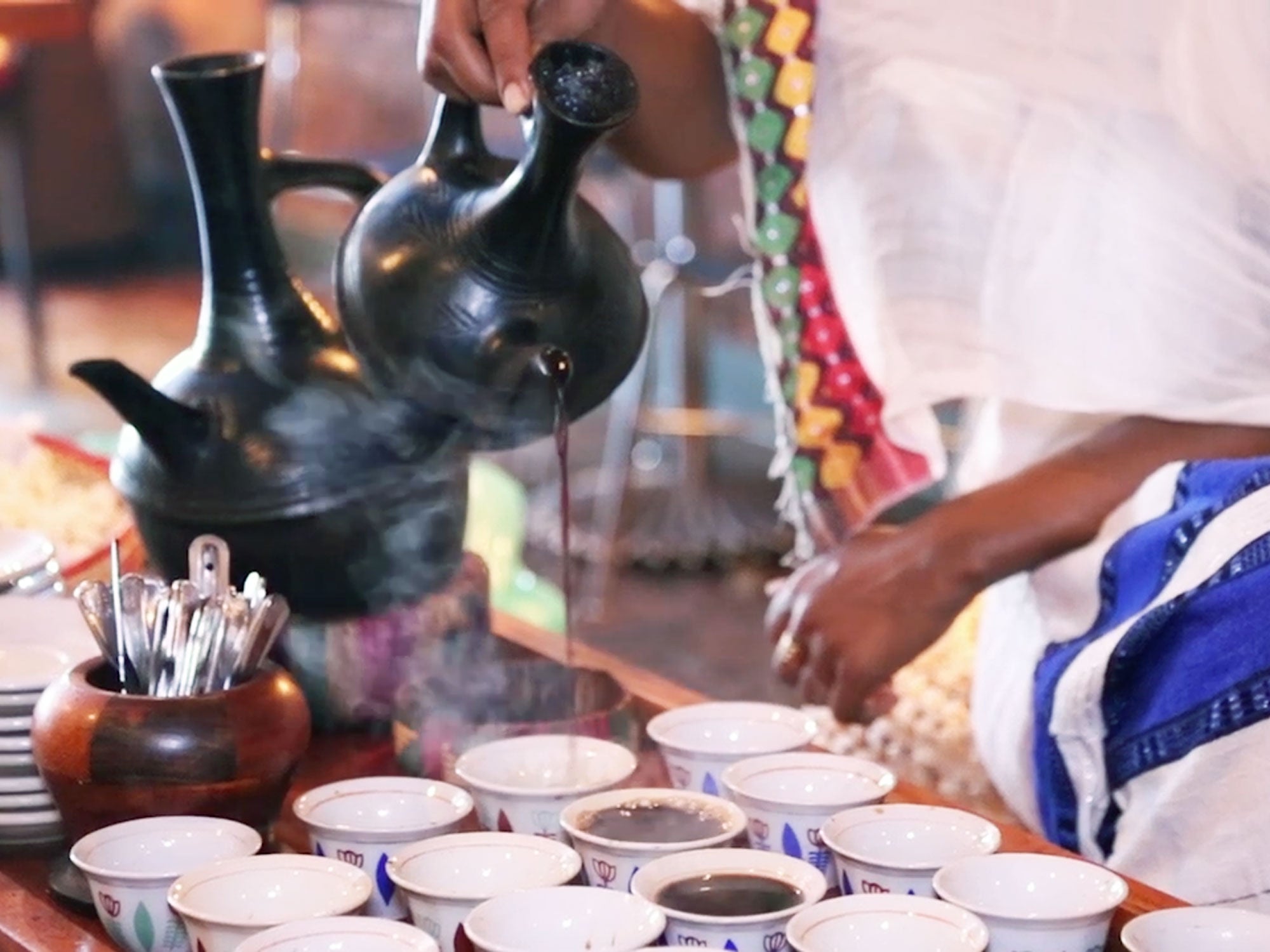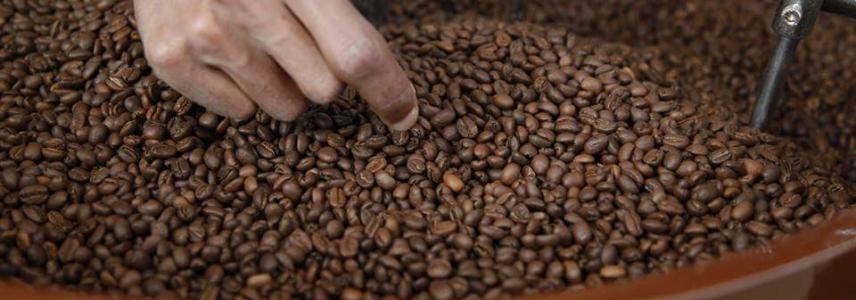Fascination About Ethiopian Coffee
Wiki Article
What Does Ethiopian Coffee Mean?
Table of ContentsExcitement About Ethiopian CoffeeThe smart Trick of Ethiopian Coffee That Nobody is DiscussingThe Facts About Ethiopian Coffee UncoveredThe Best Strategy To Use For Ethiopian CoffeeIndicators on Ethiopian Coffee You Should Know


No one recognizes specifically how or when coffee was uncovered, though there are many tales concerning its origin. An Ethiopian Legend Coffee expanded worldwide can trace its heritage back centuries to the ancient coffee forests on the Ethiopian plateau. There, tale claims the goat herdsman Kaldi initially found the potential of these cherished beans.
Kaldi reported his findings to the abbot of the local abbey, who made a beverage with the berries and discovered that it kept him alert via the long hours of evening prayer - ethiopian coffee. The abbot shared his discovery with the other monks at the monastery, and also understanding of the stimulating berries began to spread out.
The Facts About Ethiopian Coffee Revealed
By the 17th century, coffee had made its method to Europe as well as was coming to be preferred across the continent. Some individuals responded to this brand-new drink with suspicion or fear, calling it the "bitter innovation of Satan." The local clergy condemned coffee when it came to Venice in 1615 (ethiopian coffee). The controversy was so terrific that Pope Clement VIII was asked to intervene.They after that expanded the growing of coffee trees to the islands of Sumatra and also Celebes. Pertaining to the Americas In 1714, the Mayor of Amsterdam offered a present of a young coffee plant to King Louis XIV of France. The King got it to be planted in the Royal Arboretum in Paris.
In spite of a challenging trip total with horrible weather condition, a saboteur who tried to damage the seedling, and also a pirate strike he took care of to transfer it safely to Martinique. Once planted, the plant not just prospered, yet it's credited with the spread of over 18 million coffee trees on the island of Martinique in the following 50 years.
Ranches were developed in stunning exotic forests and also on rugged mountain highlands. Some plants prospered, while others were temporary. New countries were established on coffee economic climates. Ton of money were made and shed. By the end of the 18th century, coffee had turned into one of the world's most successful export plants. After petroleum, coffee is the most sought product in the world.
See This Report about Ethiopian Coffee
Considering that the course to 'success' hinges on exploiting the distinct aspects of Ethiopia's coffee, this study is devoted to, Identifying the factor(s) in the production and/or market chain that influence on coffee qualityinvestigate the impacts of different environmental factors on Ethiopian coffee high quality and predict how a coffee could taste as a result of these elements, Identifying reliable administration plan(s) to make certain lasting manufacturing of premium quality berries, Building capacity among farmers, expansion staff, managers and also investors to guarantee a sustainable excellent high quality coffee manufacturing system, Allowing farmers to produce and also market coffee that draw in premium prices: increasing their revenue, Generating plant version anticipating just how the coffee could perform as a feature of components To design an approach whereby coffee quality can be enhanced and/or maintained that contributes to sustainable and much more fair use of all-natural resources To accrue lasting economic benefits to the coffee expanding area while keeping the visit site environmental resource base by helping with producer engagement in top quality coffee production and supply chains contribute to the basic advancement objective that the government released out to improve the resources of coffee farmers a) Todevelop cutting-edge methodological technique that boosts coffee high quality by identifying the factor(s) in the production and/or supply chain that influence on coffee top quality b) To reveal the underlying procedures identifying the communications between coffee high quality, tree monitoring, nutrition and atmosphere c) Integrate the study result with the farmers' indigenous expertise to boost as well as keep Ethiopian coffee qualityd) Deliver quantitative data to underpin alternate techniques and allow the building and construction and application of a coffee production model This programme wishes to analyze the significance of several aspects restricting the stability of the coffee sector, incorporate and share info with relevant stakeholders, e.
Coffee was very first found approximately Kaffa in 850 Advertisement by an Ethiopian goat herder. Ethiopian Coffee 101 To appreciate coffee is to recognize its origins, the beans, and the processes to the developing approaches to appreciate a coffee from Ethiopia. Below are coffee realities worth reviewing while drinking your morning joe.
An Unbiased View of Ethiopian Coffee
To boost its coffee productivity, old trees will be changed by brand-new coffee plants. Apart from the existing coffee plantations, Ethiopia sought to grow coffee in a 5.Dry-processing (unwashed): The unpulped coffee cherries are sun-dried right after its harvest. Wet-processing (washed): Right after the coffee cherries are collected from the trees, they are pulped and fermented.
He saw the uncommon behavior of his goats each time they consume the wild berries of a shrub. Captivated by this exploration, he got some cherries as well as went to the monastery to offer what he thought to be heaven-sent food to the monk. A monk examined the coffee cherries he brought as well as threw them into the fire pit with the idea that they were the adversary's job.
Yet, lots of farmers harvest the cherries from the natural semi-forest. Teketay, Demel. (1999 ). Background, horticulture as well as environmental demands of coffee. Walia. 20. 28-50. The Gesha forest in the southern part of the nation is the most prominent. It is where most geisha coffee plants in Central America come from. Yet, the modern geisha varietals are the result of natural anomalies gradually.
Little Known Facts About Ethiopian Coffee.
The coffee beans are dry-processed as well as usually labeled as peaberry (mocha), longberry, and shortberry. Its personality is almost comparable to Mocha coffee from Yemen, which can not be high-roasted, or you'll lose its imp source clear-cut qualities.It's a ritualized type of brewing and drinking coffee performed by the female of the family. The coffee ritual is typically exercised 2-3 times a day and lasts 2 to 3 hrs. The three portions of coffee are called abol, tona, and baraka (to be honored). The ritual begins with the roasting of the environment-friendly coffee beans in a pan in a charcoal brazier.
Report this wiki page